Selective Focus: Graham Burnett
Graham Burnett operates Graflex Parts, a business that restores and repairs antique cameras. Film isn’t dead, and there are a number of people who still take on the challenges of photography without a phone or SD card. He works on medium and large format cameras that shoot one sheet of film at a time, and definitely don’t fall into the “point and shoot” category. It can take months to do the repairs, custom-build parts and fine-tune the mechanics.
GB: I do repair and modification work to antique cameras, with a specialty in a several types of high-end professional cameras dating from 1900-1950. I’m a sort of “custom design shop” but for 100-year-old cameras. The kind I work on are all considered “Large Format” and produce images that can be up to 8 inches by 10 inches wide. I found my way to this niche of photography and cameras through my own progression as a photographer. I had a few specific preferences for what kind of cameras I liked and what sort of image I was trying to create with it; inevitably it lead me to antique cameras. Every artist has tools and my clients are mainly working professionals with a distinct goal in mind, using their cameras for anything from fine art to wedding photography. I often do conversions of cameras allowing them to accept accessories or lenses meant for entirely different camera systems.
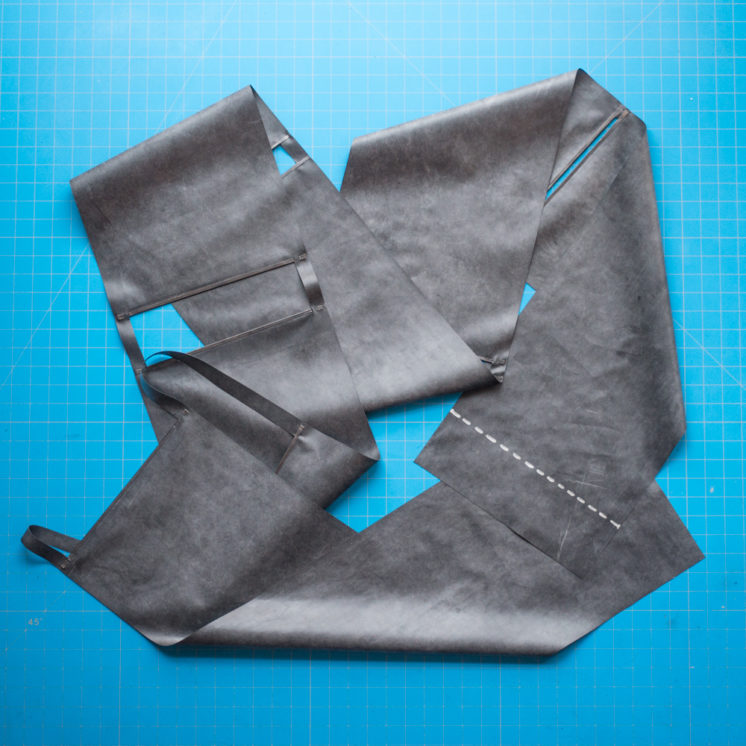
An example of the shutter curtain I make for these cameras. This curtain is then mounted on a pair of rollers inside the camera, and when a photo is taken one of the windows in the curtain will roll in front of the film allowing light to pass through and create the photograph. See the video demonstration below
I’ve worked with analog cameras for around 11 years but the significant side of my obsession has only been in the past 4 years or so. The business itself is just over 2 years old at this point.
Many of the cameras sent to me are in states of deep disrepair. Luckily a large amount of these cameras are built from brass and wood, but there are a few very integral parts that are made from rubberized fabrics or leathers, such as the viewing hoods or the bellows attached to the lens that deteriorate and rot over time. Some camera projects can take up to a year to complete with hundreds of hours involved. There are also few to no repair resource materials and definitely no schools that could teach the work I do. Because of this, all of my mechanical knowledge and skills are self taught. I like to think that my most valuable asset is patience.
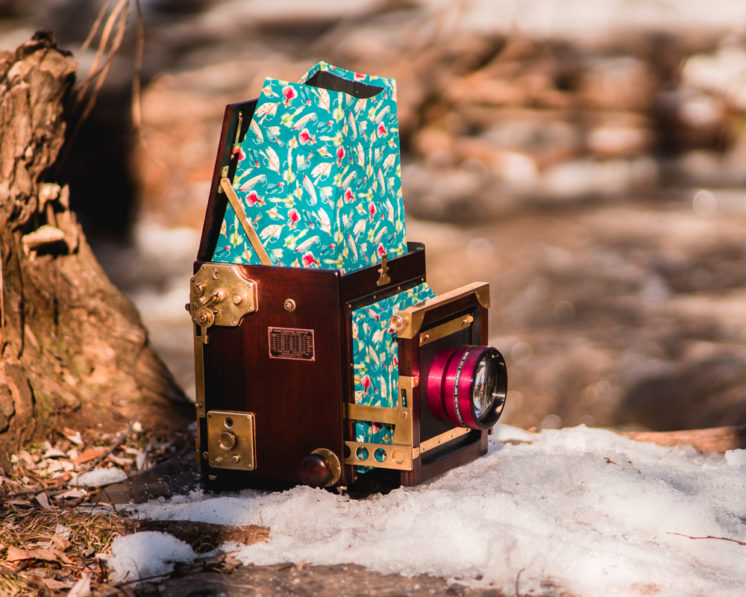
(After photo) This is a 1917 Graflex Home Portrait, 5×7 format. The final product of over 200 hours of work. I removed the rotting leather covering from the camera and finished the wood in hand rubbed oil, polishing every single piece of brass on the camera too. I also built a new shutter curtain, hood, and bellows for this beauty. The fabric for the bellows and hood was the choice of the customer.
There is a constant reward knowing that I’m directly involved in bringing these cameras into another century, especially when a passionate community exists that wants to shoot them and not just leave them on a shelf. I have an ultimate goal to bring as many of these cameras back to life and being that I am one of only a couple people in the world who currently do this work, my focus is on what the next repair tech will think of my work in another hundred years.
I have a website simply at graflexparts.com but I usually share a lot of my daily and weekly projects to my Facebook page at facebook.com/graflexparts. My Instagram handle is @graflex_parts.
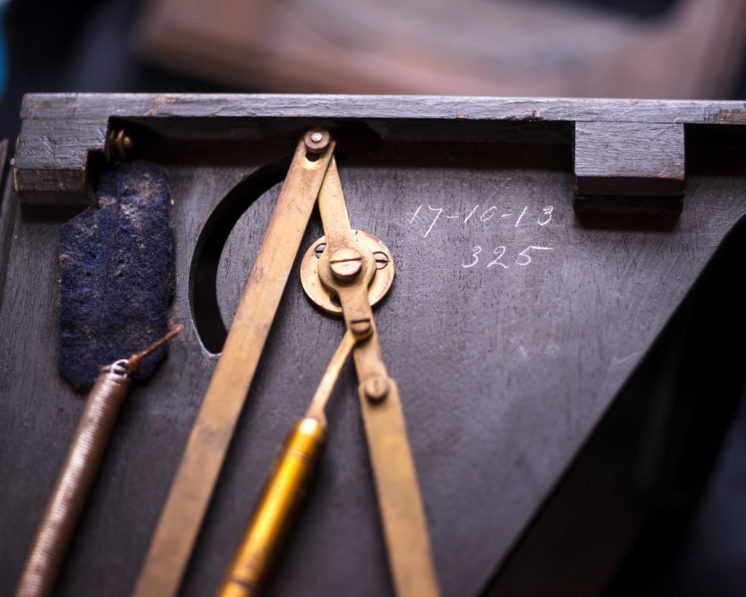
The handwritten proof mark and date from the production of this camera, October 17th, 1913. I am the first one to see this marking since it was built.
Over the next few months I’m going to be doing a little light service work on a few cameras for a Movie-Prop company, which I was told are intended for a higher budget movie being made later this year. My queue for camera conversions is actually quite full for the next year as well with some fantastically historic builds that I’ve been given the opportunity to complete.
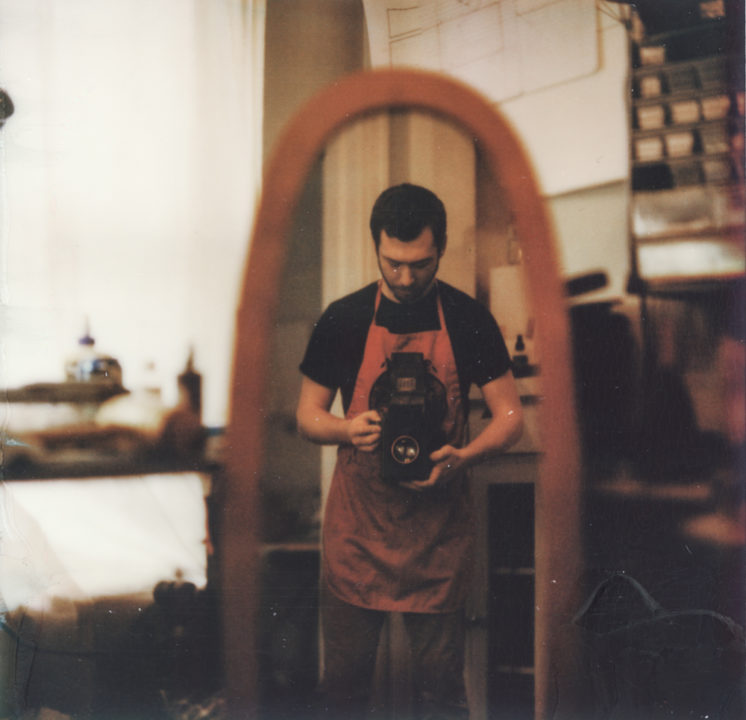
My bio photo. This is a Polaroid picture taken with a camera I converted for another client. It’s an antique selfie, in my office. The camera is a 1918 Auto Graflex.
I’m also hoping to establish a larger shop space in the near future. I’m fortunate to experience the growing pains of a small business, quickly expanding beyond the space available in my apartment and constantly juggling sustainable work with prototying/research and development. I feel very lucky to be able to do what I am.
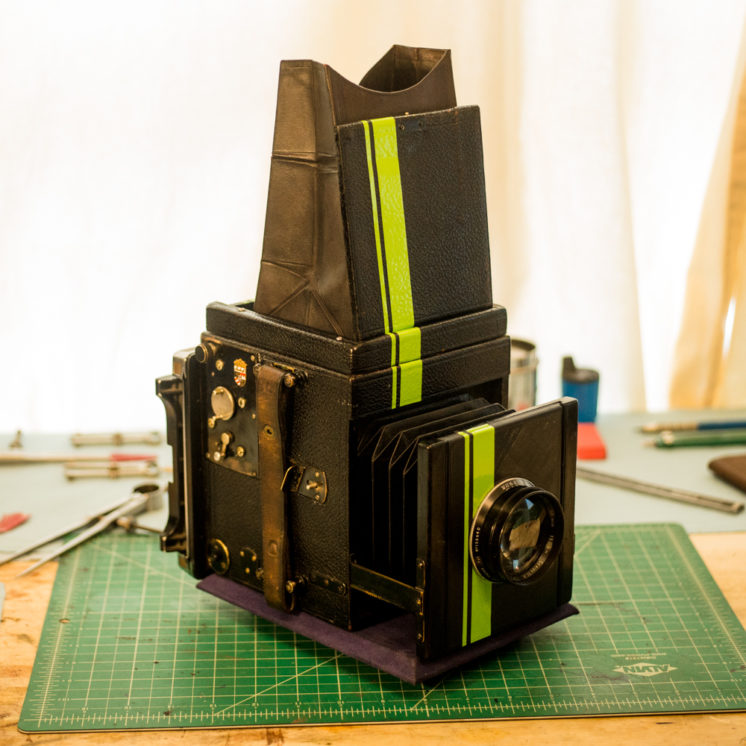
Another custom camera conversion built to a clients specifications, an early 1920’s Kershaw Reflex mated with parts from a Linhof camera. After the modification, it can produce images that are far larger in size than it was originally intended to make. The racing stripes were a special request from the client and its now a great conversation piece when he’s photographing weddings.
Recommended Links:
Leave a Comment
Only registered members can post a comment , Login / Register Here



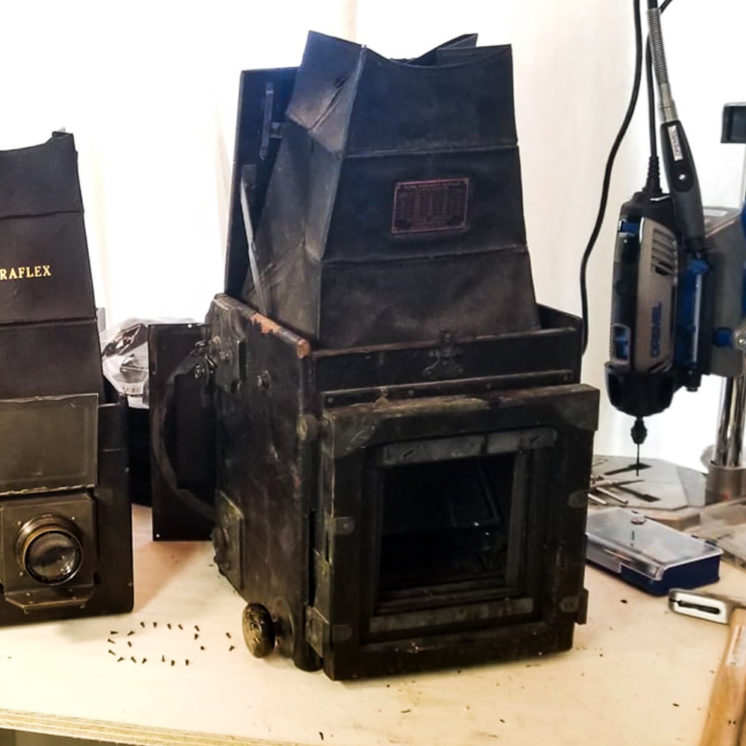












No Comments